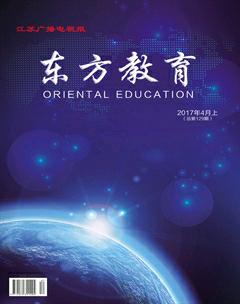杰罗姆模式与贺拉斯模式的对比
曹妹
(云南師范大学 云南昆明 650500)
Abstract:There are various translation standards and models due to diverse culture background, “textual grids” and readers requirements. The Jerome model and the Horace model made a great influence on translation theory and practice. Both of them stick to the criteria of “Faithfulness”, but they emphasize on different aspects.
Keywords: the Jerome model, the Horace model, faithfulness, culture, case studies
1.Introduction
At the end of 18 century, Jerome model and Horace model are the most distinctive translation models. Both of them emphasize on “faithfulness” and “equivalence” and follow the different approaches to different translation practices. However, the Jerome model attaches more importance on the word-for–word equivalence to translation, while the Horace model gives more emphasize on the “negotiation” between the source text and the target language. According to the aim and type of translation, translators can choose different translation model.
II. Outline of the Jerome model and the Horace model
1.The Jerome Model
Jerome model was the most systematic translation model in the ancient times, which focuses on “faithfulness” as much as possible. In other words, one should try their best to translate the source text with extremist faithful into the target language. According to this principle, a good dictionary is necessary. If a poor translation occurred, people usually blame the translators inadequate use of dictionary, though the translator who follows the Jerome model may have a feeling of guilt or even frustration for his poor translation. As Bassnett and Lefevere (2001) pointed out that “the ideal continued to haunt translators and those who taught about translation over the centuries. Since it could be realized, de facto compromises were necessary, which were, of course, entered into, although at the double price of interminable wrangling about precisely how ‘faithful faithfulness should be, or what could really be termed an ‘equivalence of what and, more importantly, of generating a perennial feeling of guilt in translation and of permanently marginalizing them in society as necessary at others.” (Bassnett & Lefevere, 2001:2) they believe that such strict faithfulness is useless due to lack of context.
2.The Horace Model
The Horace model is 1400 years historically predates the Jerome model, but it is not as famous as the Jerome model for the great influence of Bible. In Horace model, it also advocates “faithfulness”, but this is different with the Jerome model. Horace model give more emphasize on its customs and readers. And the core of this model is “negotiation”, which is opposite with “equivalence” in the Jerome model. Although there is no sacred text in the Horace model, there is the privileged language: Latin. At that time, it means that in the end, the negotiation would be made that all the other languages slanted toward the privileged language. Bassnett and Lefevere (2001) vividly depicted this phenomenon as a metaphor “Holiday Inn Syndrome” to identify the position of Latin, that is to say, Latin can make all the languages to be unified and standardized.
III. A Comparison between the Jerome Model and the Horace Model
The Jerome model and the Horace model strictly follow the “faithfulness” principle, and had great influence at that time. These two models were heatedly discussed by the translation scholars for a long time. Both the Jerome model and the Horace model made a contribution to translation practice and the development of translation theories. The biggest disadvantage is the ignorance of the textual and conceptual grids. Whats more it translates only to the linguistic level. The Horace model can be a complement of the Jerome model. It emphasize on the practical purpose, especially the translation of such texts that belong to the culture capital of a nation.
In the following part, this paper analyzes the differences between two models through practical case study:
In terms of the translation of public signs, some of them can be translated based on the word-for-word principle, but some cannot due to the culture differences and usage. Public prohibition signs are common signs can be seen in every country, and they have their own fixed traditional expressions. In Chinese, people usually use “禁止”,but in English there are different ways to express this meaning in diverse situation. For example, “禁止吸烟”, “禁止超载”, and “禁止跳下” are respectively translated as “No Smoking” “Dont Exceed Weight Limit”, and “Stay Clear from Tracks”. According to the Jerome model, these phrases would be translated as “prohibit …”, but it is clear that in these examples, the same Chinese phrase is translated into different English. In this way, readers can understand the translated version which is equivalent to their customs, thinking patterns and expressions.
IV. Conclusion
As language usually carries a profound culture connotation, translation is a cross-culture communication process with dynamic equivalence. This paper analyzes the main similarities and differences in terms of “faithfulness” and “equivalence”. Through the case study of various examples, it concludes that the Jerome model and the Horace model have their merits and defects in translation practices.
Bibliography:
[1]Bassnett, Susan & Lefevere, Andre. Constructing Cultures: Essays on Literary Translation. Shanghai: Shanghai Foreign Language Education Press, 2004
[2]賈玉新,《跨文化交际学》上海:上海外语教学出版社,1997
[3]何昌邑, 论翻译标准和文化意识形态的关系[J]. 云南民族大学学报,2004,(6)

